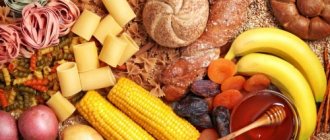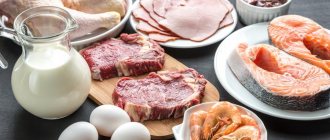What it is?
Anorexia is a disease characterized by a psychopathological disorder (obsessive mental states about supposedly excessive body weight and fear of gaining weight), partial or complete refusal to eat or decreased appetite. Anorexia leads to severe exhaustion of the body, metabolic disorders, and atrophy of the digestive system. When neglected, it provokes “starvation” death or suicidal behavior.
The disorder tends to be more common in teenage girls and young women, but it can affect boys and young men, children approaching puberty, and older women (up to and including menopause). The disorder is associated with a specific psychopathological fear of obesity and sagging figure, which becomes an annoying idea, and patients set a low body weight limit for themselves. As a rule, various secondary endocrine and metabolic disorders and functional disorders occur. Symptoms include dietary restrictions, excessive exercise, emetics, laxatives, diuretics, and appetite suppressants.
Currently, there is a visible trend towards an increase in cases of anorexia nervosa: in recent years, the number of patients has almost doubled. The risk group for this disease is most often teenage girls who do not suffer from anorexia in its pure form, but, having optimal healthy weight and height parameters, strive to lose weight and express ideas of dissatisfaction with their appearance.
Organization of treatment
How is the treatment carried out?
Restoring power
- We restore the volume of food to the standard: such a volume of food that will provide the basic and main volume
- We restore the balance of proteins, fats, carbohydrates, vitamins, minerals
- Restoring dietary diversity (gradually)
- Restoring impaired feelings of satiety and hunger
- We restore energy intake only through food, without replacement nutrition
We restore weight
Rapid weight gain is dangerous to health, and it is also dangerous to suddenly gain weight solely due to a very large amount of food (the body is not ready to digest such an amount on the fly).
Treatment of this condition is usually divided into two stages: nonspecific or emergency (2-3 weeks) and specific - long-term.
After discharge from the hospital, long-term outpatient treatment is necessary. In most patients, after 5–7 months, the first relapse of anorexia occurs, so they require re-hospitalization.
Treatment of such patients is long-term (takes months, sometimes even years) and requires the use of both psychiatric and nutritional therapy methods; many experts believe that along with psychiatrists, nutritionists should also be involved in the treatment process.
- Emergency assistance comes down to correcting the water and electrolyte balance. During the first stage of treatment, the main task is to combat cachexia, for which special dietary regimens are used, including, if necessary, artificial (parenteral and enteral) nutrition, vitamins and psychotropic drugs.
- At the second, longer stage, therapeutic measures are carried out aimed at eliminating the symptoms of the underlying mental illness that caused disturbances in nutritional status; it is necessary to convince the patient of the need for treatment, since they often underestimate the danger of the condition. Almost always, when weight loss is still insignificant, hospitalization in a specialized clinic is indicated. At the early stage of treatment, fluid retention is possible, so in the first 7–10 days it is necessary to take into account fluid intake, and the caloric content of the diet at this time should not exceed 2000 kcal. Fractional meals 6–7 times a day are prescribed in small portions under the supervision of staff. The patient is weighed daily, the mass of nutrients and feces taken is recorded, fluid intake and excretion are measured, and water and electrolyte balance is examined. Particular attention at all stages should be paid to a balanced diet through the use of enteral nutritional mixtures, which include a full set of nutritional components (proteins, fats, carbohydrates, macro- and microelements, vitamins), as well as modular mixtures. Tube feeding for anorexia nervosa is rarely used. The use of parenteral nutrition in such patients is difficult.
Nutricomp from meet all of the above requirements .
Among them:
1) standard mixtures:
- Nutricomp Standard liquid®
- Nutricomp Energy Fiber liquid®
- Nutricomp Fiber Liquid®
- Nutricomp Energy liquid®
2) specialized mixtures:
- Nutricomp Immune Liquid®
- Nutricomp Peptide Liquid®
- Nutricomp Intensive Liquid®
Each of them has its own specifics, their appointment is carried out according to indications, at the discretion of the specialist.
1) Nutricomp Standard liquid®
Key Features
- Energy value: 1 ml = 1 kcal
- May be the only source of nutrition that provides the daily requirement for proteins, energy, vitamins and minerals
- The combination of milk and soy proteins provides the most complete protein composition
- The fat component is a balanced combination of soybean oil, MCT and fish oil
- Carbohydrates are represented by maltodextrin with a high content of polysaccharides
- Distribution of energy value (% kcal): proteins: fats: carbohydrates: dietary fiber = 15: 30: 55: 0
- Gluten, lactose and cholesterol free, very low in purine
2) Nutricomp Energy Fiber liquid®
Predisposing factors for the development of neurotic anorectic syndrome
A careful examination of patients with an identified disease process gives reason to identify several causes that contribute to its formation.
Patients often experience:
- Heredity. People who have already had relatives with a similar problem in their family are much more likely to develop the disease.
- Diseases that increase the risk of anorexia: obesity, insufficient zinc intake, neurohormonal imbalances.
- Psychical deviations. Anorexia is a common manifestation of depression, addiction to psychoactive substances, neuroses, schizophrenia, and pronounced accentuations of a person with low self-esteem.
- Social aspect. Maximalist views characteristic of the teenage period can lead to anorectic syndrome. Often, views on nutrition change under the influence of the psychology of a metropolis resident.
In any case, if pathology is present, a mandatory visit to the doctor and hospitalization is required. And the sooner the better.
Key Features
- Energy value: 1 ml = 1.56 kcal
- The protein contained in the mixture in increased quantities is easily digestible thanks to the most balanced combination of milk and soy proteins
- Carbohydrates are represented by maltodextrin with a high content of polysaccharides
- The fat component is a combination of MCT, rapeseed oil and fish oil
- 2.0% dietary fiber (2 g / 100 ml)
- The high content of omega-3 fatty acids EPA+DHA has a positive effect on the course of inflammatory processes and supports immune and cardiac function, and also helps normalize blood triglyceride levels and blood pressure
- Gluten free, low cholesterol, very low lactose and purine
- Distribution of energy value (% kcal): proteins: fats: carbohydrates: dietary fiber = 20: 29: 48: 3
Veganism and anorexia
Is it possible that dietary restrictions such as vegetarianism or veganism are a manifestation of anorexia? Despite the fact that the refusal to eat animal origin occurred precisely for ethical reasons.
Anorexia can take any form. Often people come to us who supposedly adhere to proper nutrition. They may be vegetarian or vegan. If they are afraid of gaining weight, limit themselves in diet, perceive their body distorted, and their self-esteem depends only on the readings of the scale, then we can talk about anorexia.
Not all vegetarians or vegans have an eating disorder, but they do have an increased risk of developing various types of disorders due to the restriction. Any restriction or diet provokes the development of these diseases in people who are vulnerable to eating disorders.
Key Features
- Energy value: 1 ml = 1 kcal
- The most complete protein composition is represented by a combination of milk and soy proteins
- Carbohydrates are represented by maltodextrin with a high content of polysaccharides
- The combination of soybean oil, rapeseed oil, MCT and fish oil provides the optimal ratio of PUFAs
- 1.5% dietary fiber (1.5 g / 100 ml)
- Gluten, lactose and cholesterol free, very low in purine
- Distribution of energy value (% kcal): proteins: fats: carbohydrates: dietary fiber = 15: 29: 53: 3
4) Nutricomp Energy liquid®
Manifestations, complaints and mental disorders characteristic of anorexia
The onset of the disease may be hidden for some time from others.
Over time, patients experience:
- Uncomfortable feeling of being overweight.
- Gradually becoming fixated on the non-existent problem of excess weight.
- Development of an anxious and panic state, fear of getting better.
- Lack of adequate assessment of one’s mistake when presenting logical evidence of a fallacy.
- Pathological variant of eating. The sufferer eats very little, chooses strange positions, and chews for a long time.
- Depressed mood and thoughts.
- Emotional-volitional disorders. Patients are often aggressive, touchy, and embittered.
- Morbid interest in unusual methods of cooking, unnatural diets, books on healthy eating.
- Closedness and withdrawal from communication.
- Performing strenuous physical exercise.
From the outside, the patient looks strange and repulsive. Many acquaintances stop maintaining relations with him. Gradually, new symptoms are added to the listed symptoms, indicating an advanced form of the disease.
Patients develop:
- Constant weakness.
- Respiratory and cardiac arrhythmia.
- Muscle cramps.
- Pathological emaciation.
- Anemia.
Patients constantly monitor their body weight and even with a slight increase in it experience severe discomfort. In order to lose even more weight, they use medications. In this situation, immediate involvement of a psychiatrist and hospital treatment are required.
Key Features
- Energy value: 1 ml = 1.5 kcal
- The protein contained in the mixture in increased quantities is easily digestible thanks to the most balanced combination of milk and soy proteins
- Carbohydrates in the form of quickly digestible polysaccharides (maltodextrin)
- The fat component is a combination of MCT, rapeseed oil and fish oil
- The high content of omega-3 fatty acids EPA+DHA has a positive effect on the course of inflammatory processes and supports immune and cardiac function, and also helps normalize blood triglyceride levels and blood pressure
- Does not contain gluten, cholesterol. Very low lactose and purine content
- Distribution of energy value (% kcal): proteins : fats : carbohydrates : dietary fiber = 20 : 30 : 50 : 0
Specialized mixtures:
1) Nutricomp Immune Liquid®
Useful foods for anorexia
- freshly prepared fruit puree from green banana, apple, pear.
- vegetable puree, soufflé and soups made from boiled beets, carrots, steamed turnips;
- rice, oatmeal, buckwheat porridge;
- greens (dill, cilantro, vegetable physalis pulp);
- bread, dry baked goods;
- vegetable oil (deodorized sunflower, rapeseed, flaxseed);
- nuts;
- honey, natural dark chocolate;
- unsweetened low-fat kefir;
- fish (pollock, blue whiting, bream);
- boiled chicken, turkey;
- sweets made from fat-free shortcrust pastry;
- melted butter, low-fat cheese;
- ice cream without preservatives, with nuts or raisins.
Traditional medicine to increase appetite:
- 1 infusion of calamus root (2 teaspoons of chopped calamus root per glass of boiling water, infuse in a thermos overnight): take a quarter glass thirty minutes before each meal;
- 2 freshly squeezed grapefruit juice with pulp (a quarter glass thirty minutes before eating);
- 3 infusions of common anise seeds (1 teaspoon of anise seeds per glass of boiling water, leave until completely cooled): take half a glass half an hour before meals;
- 4 infusions of wormwood (1 teaspoon of wormwood herb per two glasses of boiling water, leave for two hours, strain): take a quarter glass thirty minutes before each meal;
- 5 tincture of high aralia roots (1 tablespoon of crushed aralia root per hundred ml of alcohol, infuse for half a month in a dark place): take 30 drops with meals for two to three weeks;
- 6 infusion of trefoil watch (2 teaspoons of watch leaves per glass of boiling water, leave for one hour, strain): take a quarter glass thirty minutes before each meal;
- 7 fresh mustard seeds (take 30 seeds for 20 days).
Dangerous and harmful foods for anorexia
Particularly dangerous foods for anorexia include: canned foods (sausages, canned meat and fish, canned vegetables), artificial foods (spreads, margarines, sweet carbonated water), foods with preservatives (all shelf-stable products), foods with high fat content.
You should also limit your consumption of lean pork, beef, pasta, and artificial sweets.
Attention! The information is for informational purposes only and is not intended to make a diagnosis or prescribe treatment. Always consult a specialized doctor!
Authors: Anna Shelestun, Tatyana Eliseeva Ask a question
Rating:
10
/10
Votes: 1
Usefulness of material 10
Reliability of information 0
Article design 0
Key Features
- Energy value of 1 ml = 1.36 kcal
- High protein content provided by a combination of milk protein and glutamine-rich wheat protein hydrolysate
- Glutamine (1.97 g/100 ml) helps maintain the immune function of the intestines and the body as a whole
- The formula is enriched with antioxidants (Vitamins A, C, E, group B, selenium, zinc, copper)
- Contains a unique lipid combination of MCT, LCT and fish oil, providing an optimal ratio of PUFAs, which has a pharmacological effect on the system of pro- and anti-inflammatory mediators
- Carbohydrates are represented by maltodextrin with a high content of polysaccharides
- Contains 1.4% dietary fiber (1.4 g/100 ml)
- Does not contain cholesterol. Content of purine 3.0 mg per 100 ml, gluten 30 mg per 100 ml, lactose 14 mg per 100 ml
- Distribution of energy value (% kcal): proteins: fats: carbohydrates: dietary fiber = 20: 24: 54: 2
2) Nutricomp Peptide Liquid®
Specialized liquid mixture for patients with impaired digestion and absorption
A specialized fully balanced, isocaloric, semi-elemental liquid mixture based on peptides and medium chain triglycerides for patients with impaired digestion and absorption.
Symptoms
From the point of view of the somatic course of the disease, a sharp loss of body weight, including muscles, attracts attention. Girls often lose their periods (usually when they weigh less than 45-47 kg). Patients often experience problems with the functioning of the gastrointestinal tract, constipation, various laboratory test abnormalities (deviations from the norm of hormones, microelements, hemoglobin, etc.), dizziness and fainting, swelling of the salivary glands, weakness, dental problems, brittle hair and nails, a constant feeling of cold due to a lack of adipose tissue.
Stages of development
The course of the disorder can be divided into 3 stages:
- Body dysmorphomania: characterized by impaired perception of one’s own body with a feeling of imaginary fullness, decreased mood, anxiety, and the search for the “ideal diet”
- Anorectic. During this period of time, there is a total refusal of food, a sharp (20-30%) loss of body weight, and somatic manifestations of the disease manifest themselves. On an emotional level, during this period, patients often feel uplifted with an increase in mood, as they feel imaginary success in solving their weight loss task.
- Cachectic: body weight deficiency can reach 50% of predicted. At this phase, systematic disturbances in the functioning of internal organs (heart, adrenal glands, gastrointestinal tract) begin, so-called oncotic edema begins due to protein deficiency. In the absence of proper treatment, this clinical picture ends in death.
Key Features
- Energy value 1 ml = 1 kcal
- High biological value protein from various sources such as whey protein and hydrolyzed soy protein
- Oligopeptides as a protein component
- High proportion of MCTs (51%) improves fat absorption
- High degree of hydrolysis facilitates protein absorption
- Reduced fat content reduces stress on the liver and pancreas
- Distribution of energy value (% kcal): proteins: fats: carbohydrates: dietary fiber = 14: 12: 74: 0
3) Nutricomp Intensive Liquid®
Specialized liquid mixture for patients with respiratory failure and post-traumatic metabolic disorders
A specialized hypercaloric, ready-to-use, low-carb liquid formula enriched with MCTs. Metabolically adapted formula for patients with respiratory failure and post-traumatic metabolic disorders.
The real causes of anorexia nervosa
Anorexia develops due to a combination of factors.
It has been proven that the disease has a genetic predisposition. Cynthia Bulik, one of the leading researchers in eating disorders, has conducted extensive research. She discovered that the anorexia gene is localized on chromosome 12, like the genes for other diseases: endocrine diseases, autism.
However, genetic predisposition alone is not enough for anorexia nervosa to develop. Additional factors are needed. For example, previous diseases (mononucleosis); environmental conditions, education; certain types of activities related to professional thinness - modeling, sports, ballet. Traumatic life events can also trigger the development of anorexia nervosa.
In the words of Cynthia Bulik, “Genetics loads the gun, and environment pulls the trigger.” That is, there is a certain genetic predisposition that can be realized when additional factors are activated. This is good news because not everyone who has the gene will get the disease. There is a way to prevent anorexia nervosa.
So, one of the powerful triggers that provokes anorexia is dieting. But if you convey to your child care and respect for your body, and the absence of food restrictions, this will become a protective factor that will protect the child.
Key Features
- Energy value: 1 ml = 1.3 kcal
- The high biological value of the protein is due to the combination of milk (casein) and soy proteins
- Carbohydrates are represented by a fast and easily accessible source of energy, maltodextrin with a high content of polysaccharides
- The fat component is a combination of MCT and soybean oil
- Low, physiological osmolarity ensures better tolerability of the formula
- Distribution of energy value (% kcal): proteins : fats : carbohydrates : dietary fiber = 20 : 40 : 40 : 0
The role of the nutritionist in the recovery phase of anorexia nervosa
When the client’s life is no longer in danger, the nutritionist consultant should immediately get to work. Here it is important to use not a directive, but a loyal method of communication, refuse to criticize the client’s actions, and show restraint and patience.
There is serious, difficult work ahead to return a person to normal life, so there is no need to rush, so as not to make mistakes. Meetings with the client should be frequent and regular - at least 2-4 times a month. This is required in order to constantly monitor the dynamics of his condition, make timely adjustments to the diet, and monitor the client’s psychological and physiological status.
The most important thing is to correctly assess the client’s readiness for the changes proposed by the nutritionist. There is no point in forcing events, because this will only increase the likelihood of a breakdown and relapse of anorexia. That is why there is no general diet therapy scheme for such clients; everything is very individual and largely depends on the psychological state of the person.
Do not forget that people with anorexia should not know about the calorie content of the diet prescribed to them, the amount of protein, fat and carbohydrates in it, as this can provoke a desire to again control their food and weight, reducing the amount of food they eat and resorting to deception.
Also, do not tell the client about his actual weight and body composition; under no circumstances should he know about the increase in fat mass. It is advisable that there are no scales at home, talk about this with his relatives, ask him to get rid of this measuring device (at the same time you can hide a centimeter, which is used to measure the volume of a figure).










